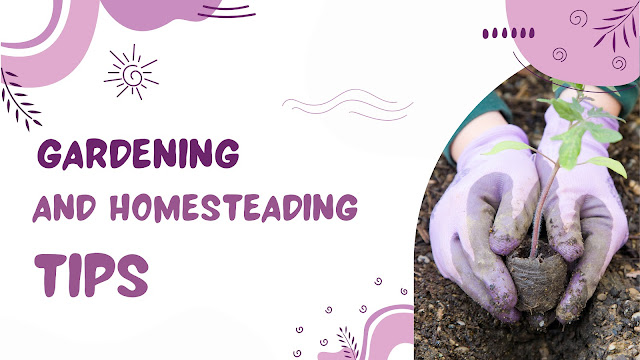
Introduction
Gardening and homesteading are two practices that have been around for centuries, but are becoming increasingly popular in today's society. Gardening is the practice of cultivating plants, fruits, and vegetables, whether it's in a backyard garden, a community garden, or even on a windowsill. Homesteading, on the other hand, is the practice of self-sufficient living, often through the cultivation of food and other resources. Both gardening and homesteading offer a sense of connection to the land and the environment, as well as the opportunity to be more self-sufficient and sustainable.
Gardening is a great way to grow your own fresh and healthy food, while also being a fun and rewarding hobby. From planting seeds to harvesting produce, gardening offers the opportunity to learn about plant growth and care. It also provides a sense of accomplishment and satisfaction when you can enjoy the fruits of your labor. In addition, gardening can also be a great way to connect with nature and improve mental and physical well-being.
Homesteading, on the other hand, is a more comprehensive approach to self-sufficient living. It can include practices such as gardening, raising animals, and preserving food. Homesteading allows individuals to be more self-sufficient by producing their own food and other resources, rather than relying on store-bought items. It can also be a great way to reduce one's environmental impact and live in a more sustainable way. Homesteading can also be a great way to learn new skills and improve self-sufficiency.
gardening and homesteading are two practices that offer a sense of connection to the land and the environment, as well as the opportunity to be more self-sufficient and sustainable. Gardening is a great way to grow your own fresh and healthy food, while also being a fun and rewarding hobby. Homesteading, on the other hand, is a more comprehensive approach to self-sufficient living, including practices such as gardening, raising animals, and preserving food. Both gardening and homesteading can provide individuals with a sense of accomplishment and satisfaction and can help to improve mental and physical well-being.
Layout of a garden
The layout of a garden is an important aspect of gardening, as it can greatly impact the overall look and functionality of the space. A well-designed garden layout can not only enhance the aesthetic appeal of the garden but also help to maximize the use of space and improve the overall health of the plants.
There are several different types of garden layouts to choose from, each with their own unique characteristics and benefits. One popular layout is the formal garden design, which is characterized by symmetrical shapes and straight lines. Formal gardens often include geometric beds, topiary, and hedges. Another popular layout is the cottage garden design, which is characterized by a relaxed and informal style, and often includes a mix of flowers and vegetables. Cottage gardens are often designed with a mix of tall and short plants to create a natural look.
Another popular layout is the container garden design, which is perfect for small spaces or for those who want to add a pop of color to their outdoor spaces. Container gardens are designed to be planted in pots, window boxes or other containers, and can be placed anywhere. Container gardens are popular for their flexibility, since they can be moved around easily and are great for renters who can't make permanent changes to their living space.
The raised bed garden design is another popular option, which is characterized by beds that are elevated above the ground. Raised beds are great for people with mobility issues or for those who want to reduce the amount of bending and crouching. They are also great for improving drainage and preventing soil compaction.
Ultimately, the layout of a garden should be tailored to the individual's needs and preferences. It's important to consider factors such as the amount of sun and shade, the size of the garden, and the intended use of the space when designing a garden layout. By considering these factors and experimenting with different layouts, gardeners can create a beautiful and functional space that they can enjoy for years to come.
Conclusion
Gardening and homesteading are two practices that offer many benefits to individuals and the environment. Gardening is a great way to grow your own fresh and healthy food, while also being a fun and rewarding hobby. Homesteading, on the other hand, is a more comprehensive approach to self-sufficient living, including practices such as gardening, raising animals, and preserving food. Both gardening and homesteading can provide individuals with a sense of accomplishment and satisfaction, as well as improve their mental and physical well-being.
Gardening and homesteading also offer an opportunity to be more self-sufficient and sustainable, by producing your own food and other resources. It can also help reduce one's environmental impact, by using organic and sustainable methods of cultivation. Additionally, gardening and homesteading can be a great way to learn new skills, from growing fruits and vegetables to preserving food, and from raising animals to building sustainable structures.
gardening and homesteading are not only a great way to grow
your own food, but also a rewarding and enriching way of life. Whether you have
a small balcony or a large backyard, anyone can start gardening and
homesteading and start reaping the benefits. With a little bit of planning, hard
work, and creativity, it's possible to turn any outdoor space into a beautiful
and productive garden.





